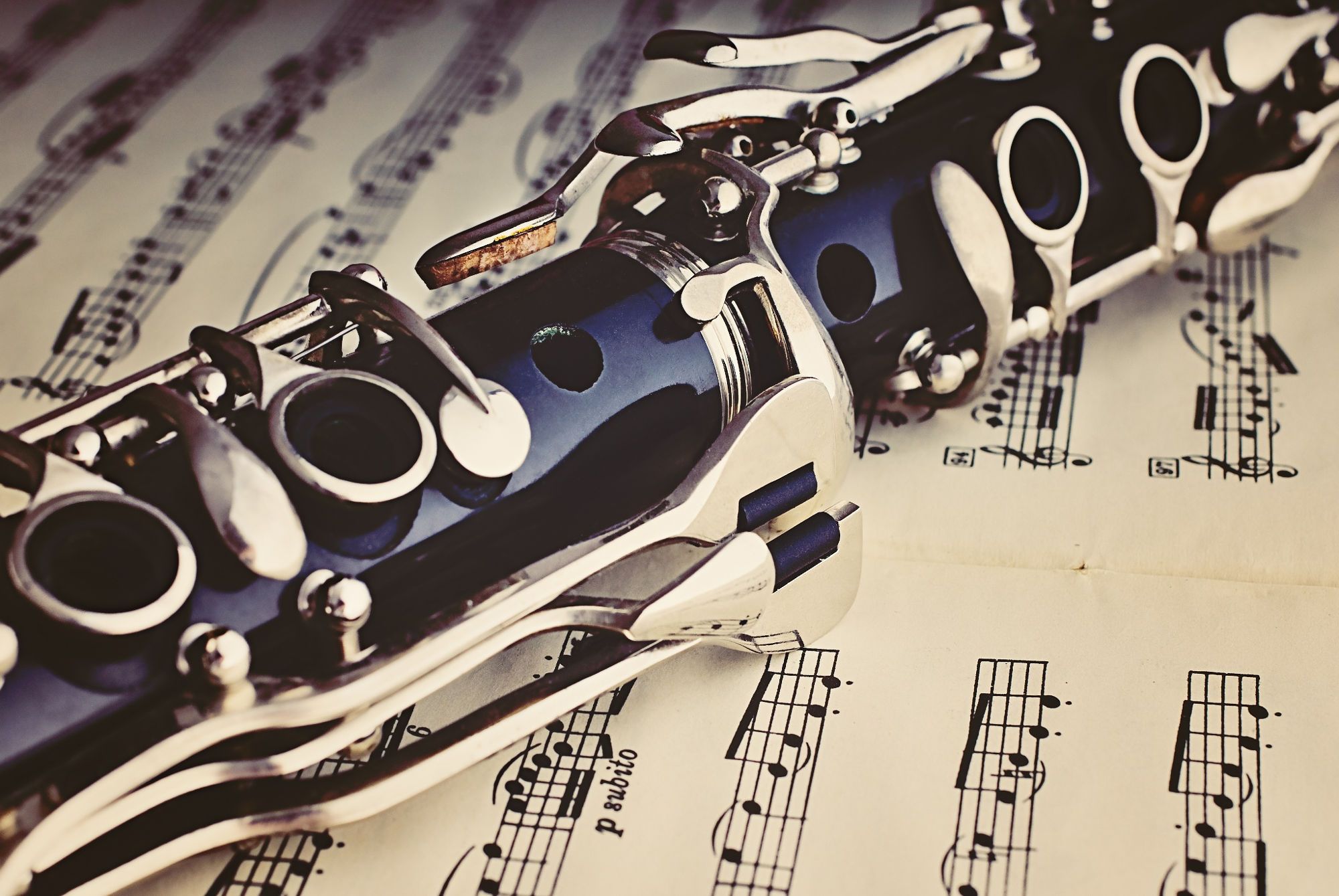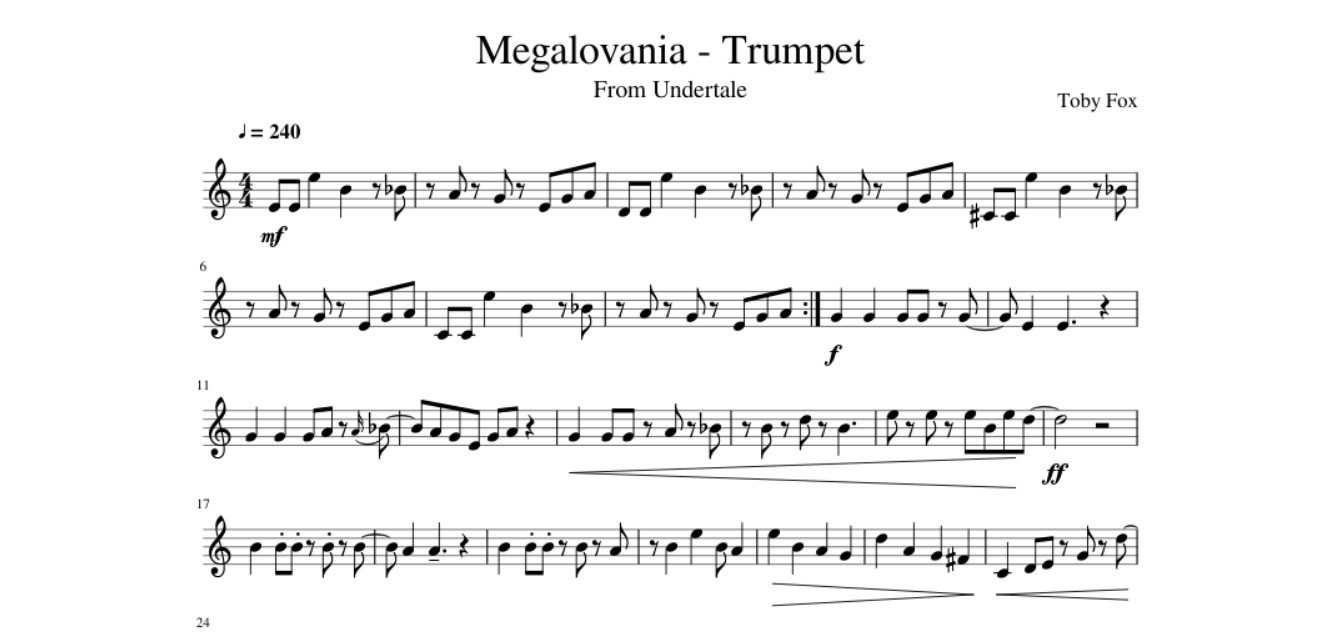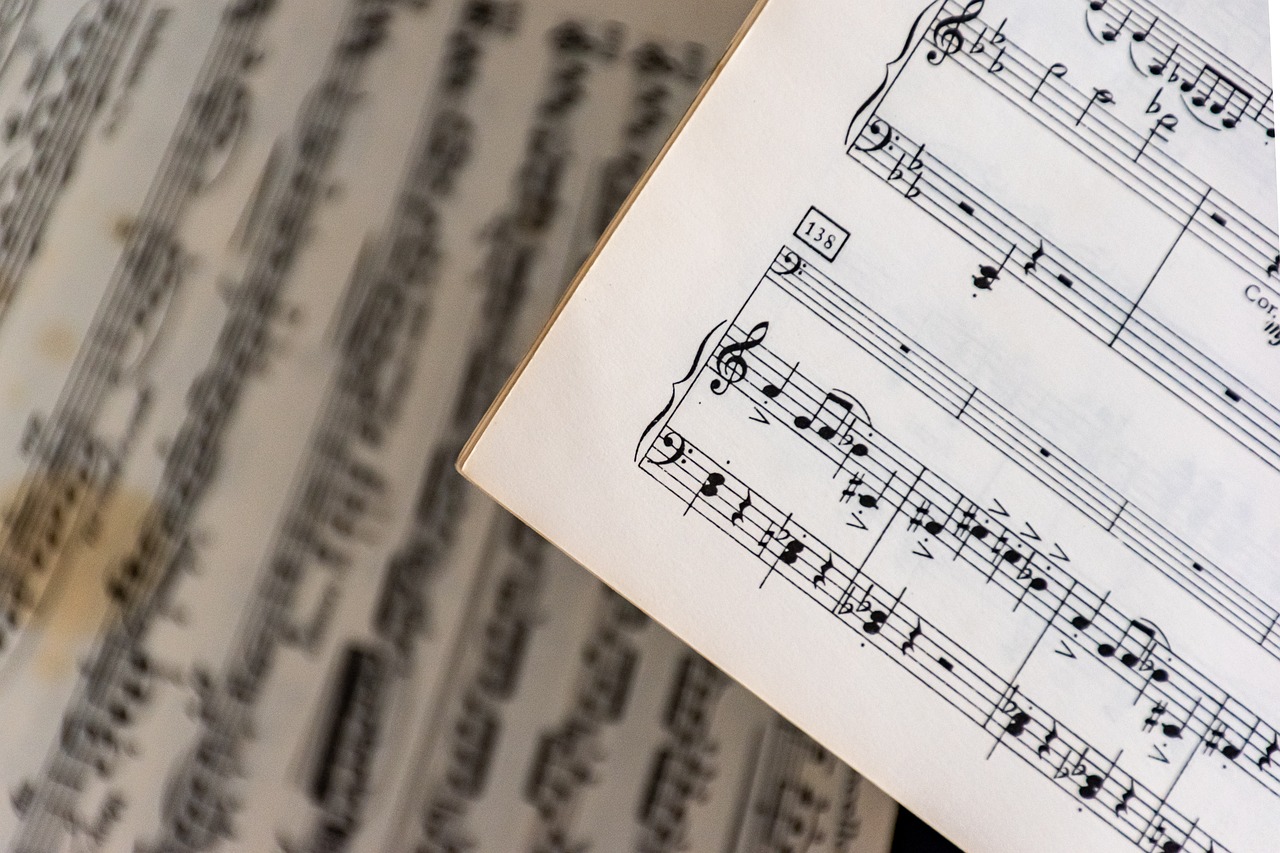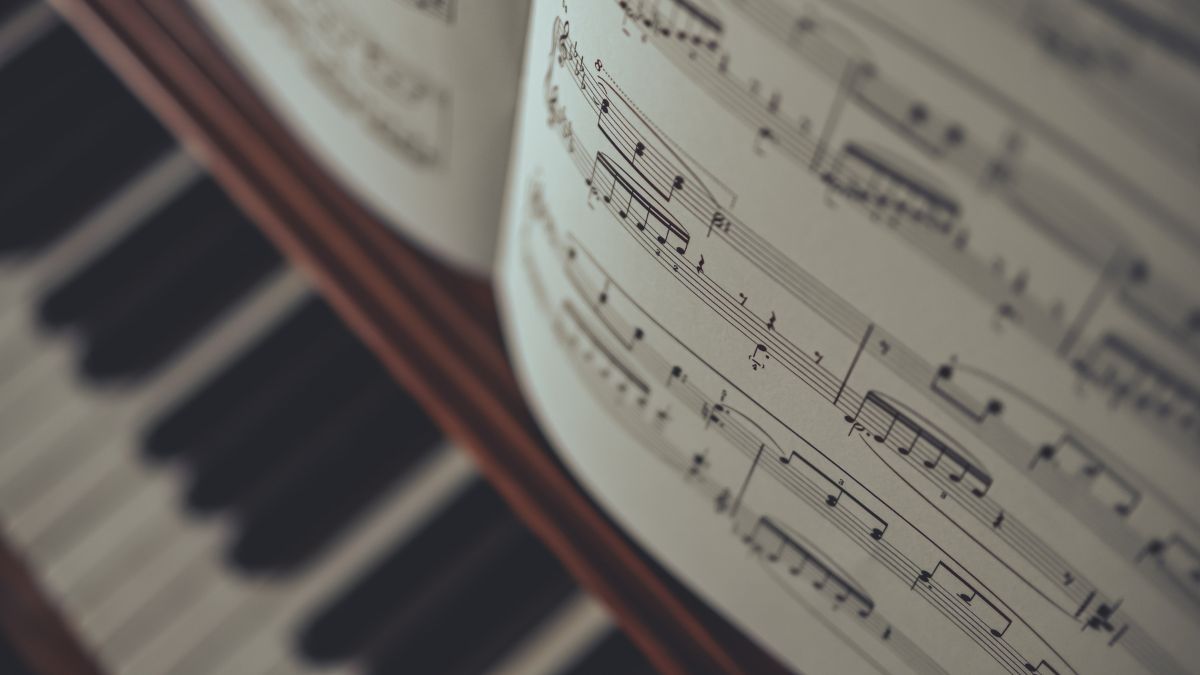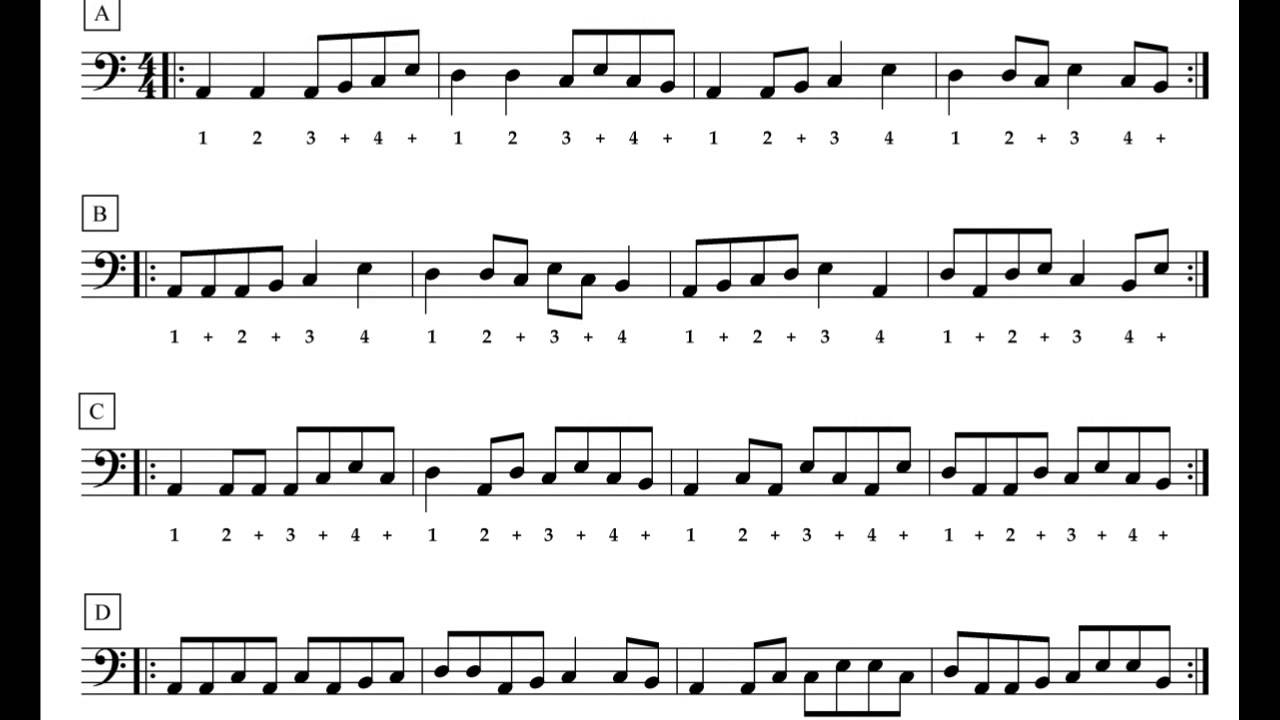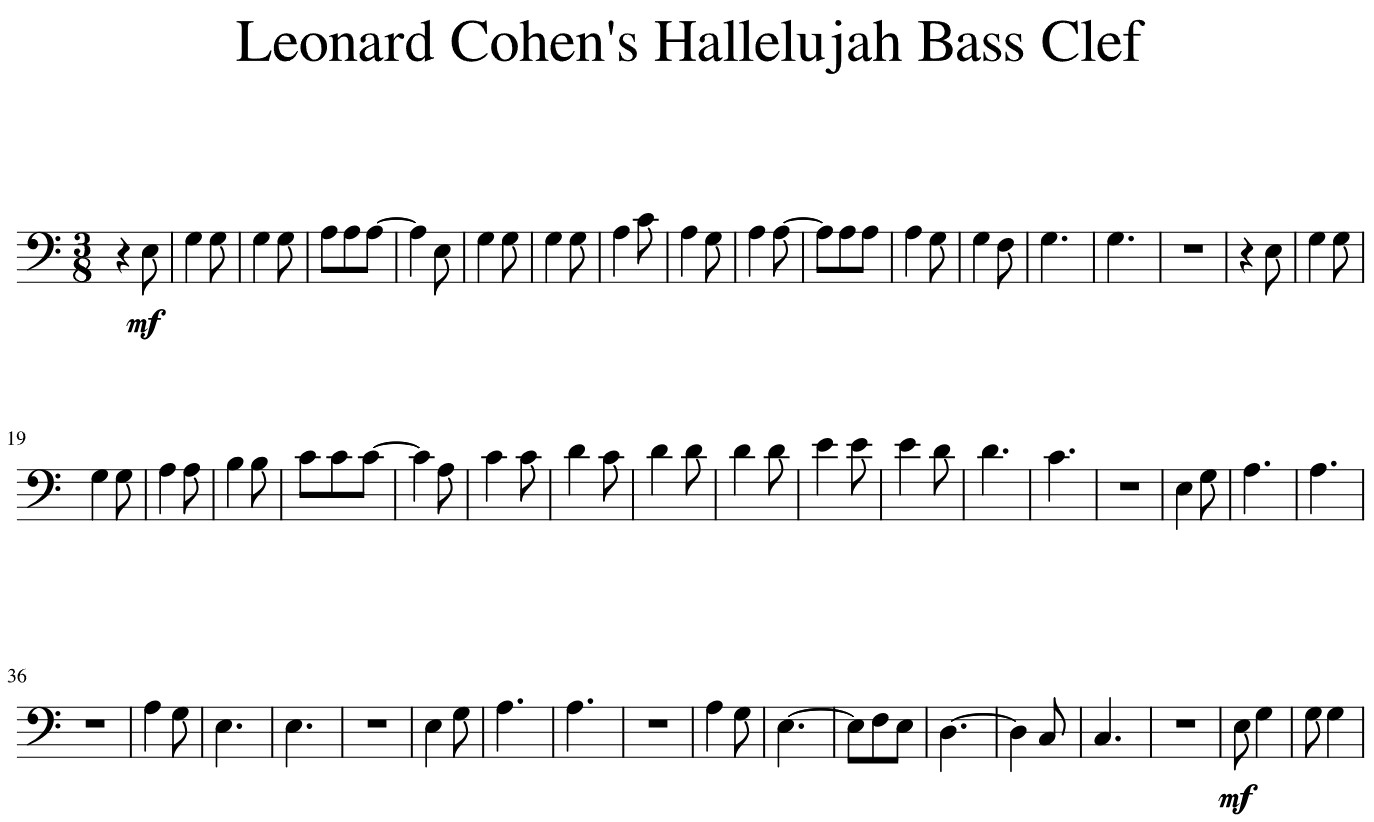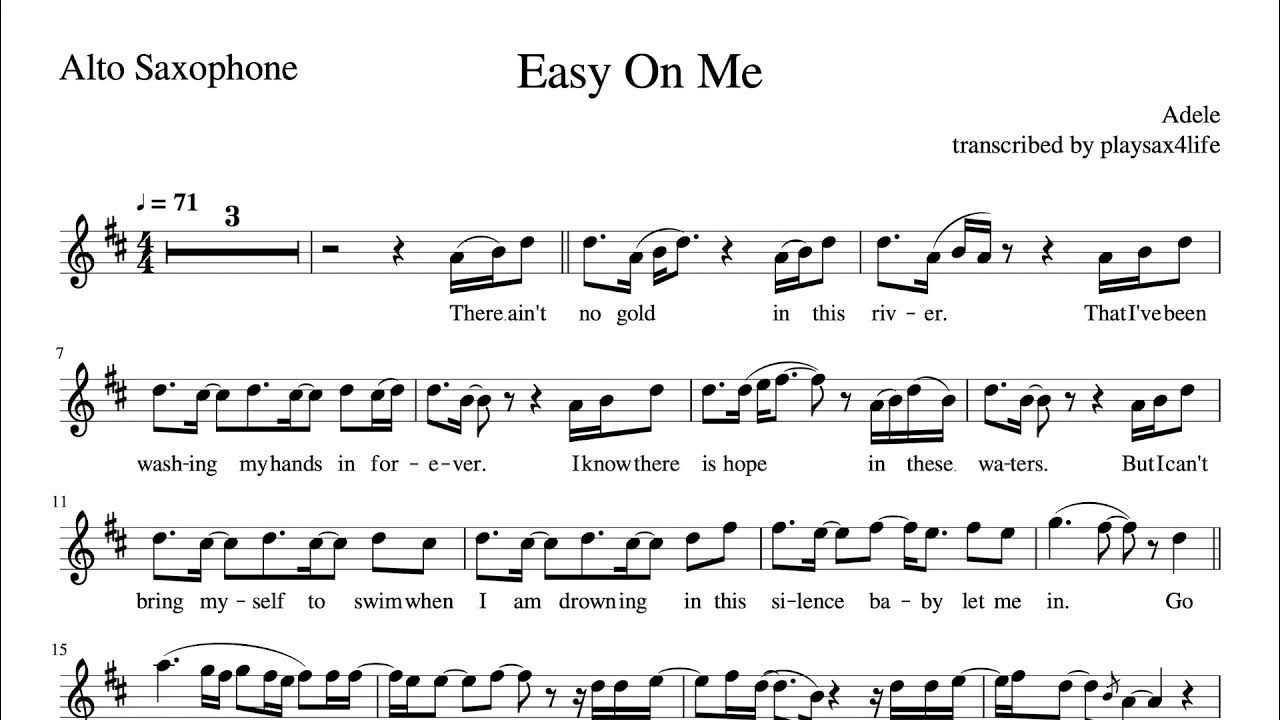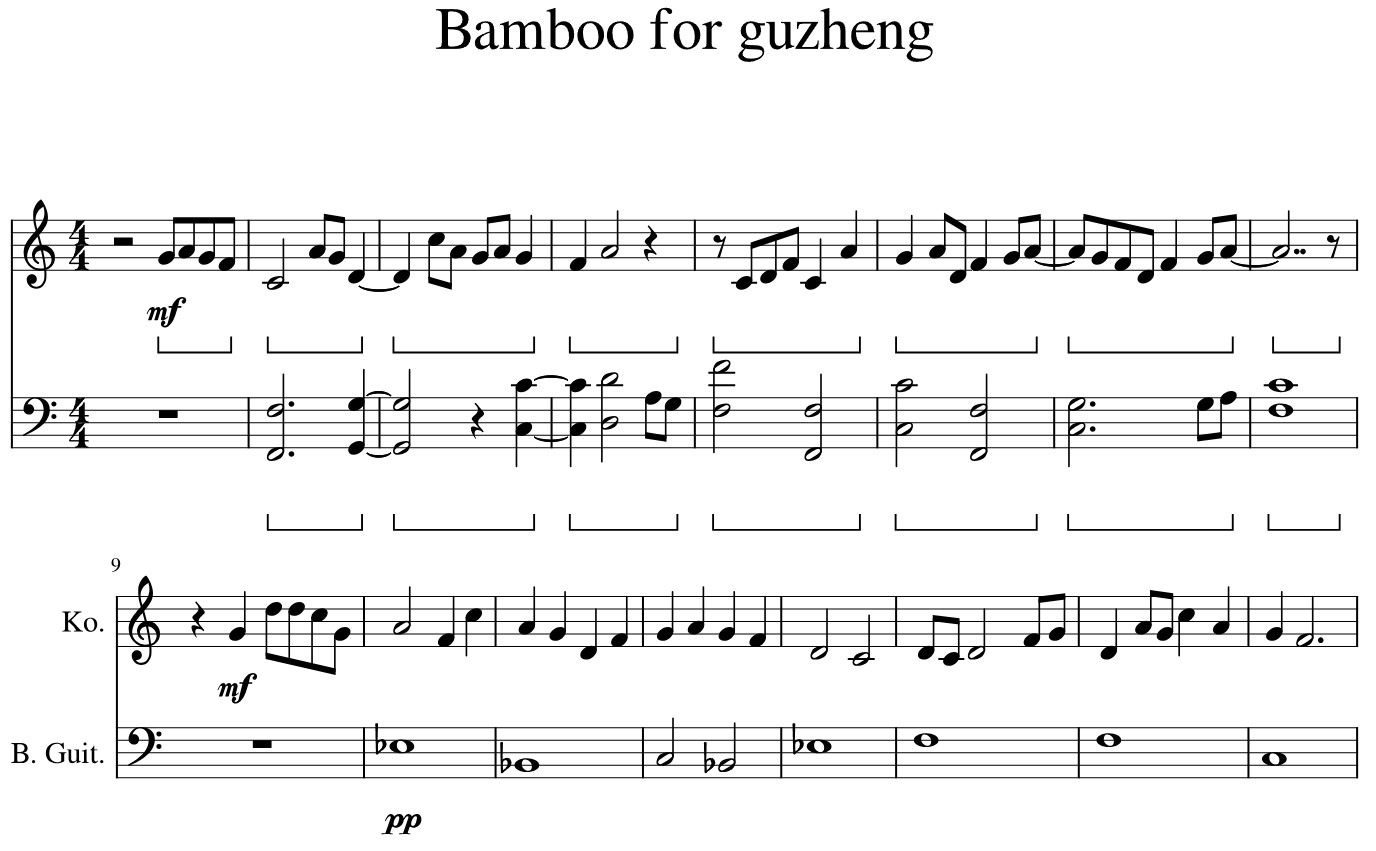Home>Production & Technology>Sheet Music>How To Read Sheet Music For Harp


Sheet Music
How To Read Sheet Music For Harp
Modified: January 22, 2024
Learn how to read sheet music for the harp and unlock a whole new world of musical possibilities. Gain confidence in playing your favorite songs with our easy-to-follow guide.
(Many of the links in this article redirect to a specific reviewed product. Your purchase of these products through affiliate links helps to generate commission for AudioLover.com, at no extra cost. Learn more)
Table of Contents
Introduction
Welcome to the fascinating world of sheet music for the harp! As a versatile and expressive instrument, the harp has a rich history dating back centuries and continues to captivate audiences today. Whether you are a beginner or an experienced harpist, understanding how to read sheet music is an essential skill that will unlock countless musical possibilities.
In this comprehensive guide, we will delve into the basics of sheet music for the harp and equip you with the knowledge to navigate through various musical notations, symbols, and techniques. By the end of this article, you will have a solid understanding of how to read sheet music and apply it to your harp playing.
But first, what exactly is sheet music? In its simplest form, sheet music is a written representation of a musical composition, complete with musical notations that communicate pitch, rhythm, dynamics, and more. It serves as a roadmap for musicians, guiding them through the various elements of a piece.
Sheet music is typically written on a series of horizontal lines called a staff, which provides a framework for placing notes and other musical symbols. Each line and space on the staff represents a different pitch, allowing musicians to read and interpret the music accurately.
Before diving into the intricacies of sheet music for the harp, it is important to familiarize yourself with the basics. Understanding the staff, clefs, key signatures, note duration, and other fundamental elements will provide a solid foundation for your sheet music reading skills.
So, grab your harp, let’s begin our journey into the enchanting realm of sheet music!
Basics of Sheet Music
Before we can dive into reading sheet music for the harp, it’s essential to understand the basic elements that make up sheet music. Let’s explore the fundamental components that you’ll encounter as you embark on your musical journey.
The Staff: The staff is a set of five horizontal lines and four spaces. Each line and space represents a different pitch, allowing us to visualize and interpret the music. The lines and spaces are numbered from bottom to top, with the bottom line representing the lowest pitch and the top line representing the highest pitch.
Clefs: Clefs are symbols placed at the beginning of the staff to indicate which line represents a specific pitch. The most commonly used clefs in harp sheet music are the treble clef, also known as the G clef, and the bass clef, also known as the F clef. The treble clef is used for higher-pitched notes, while the bass clef is used for lower-pitched notes. Sometimes, you may also encounter the alto clef or the tenor clef.
Key Signatures: Key signatures tell us which notes within a piece are sharp or flat. They are placed at the beginning of each staff and consist of sharps (#) or flats (b) located on specific lines or spaces. Key signatures provide a roadmap for understanding the tonalities of a piece and help us determine the appropriate notes to play.
Note Duration: Each note in sheet music has a duration or length, which indicates how long the note is held. The most common note durations include whole notes, half notes, quarter notes, eighth notes, and sixteenth notes, among others. Rests are also used to indicate periods of silence or non-playing.
Barlines and Measures: Barlines are vertical lines that divide the staff into measures or bars. Measures help organize the music into manageable sections and provide a visual representation of rhythmic patterns. Each measure contains a specific number of beats according to the time signature.
Time Signatures: Time signatures represent the number of beats in each measure and the type of note that receives one beat. The most common time signature is 4/4, also known as common time, where each measure contains four beats and a quarter note receives one beat. Other common time signatures include 3/4 (waltz time) and 6/8 (compound time).
Now that we have a basic understanding of the elements that comprise sheet music, we can begin exploring how these elements translate to the harp. In the next sections, we will take a closer look at reading notes, chords, dynamics, and other crucial aspects of sheet music specific to the harp. So, let’s continue our journey into the enchanting world of sheet music for the harp!
Understanding the Staff
The staff is a fundamental component of sheet music that provides a visual representation of pitch. It consists of five horizontal lines and four spaces, each representing a different pitch. Understanding the staff is crucial for accurately reading and playing sheet music on the harp.
The lines and spaces on the staff are numbered from bottom to top. The bottom line represents the lowest pitch, and as you move up the staff, each line and space represent progressively higher pitches. This allows musicians to determine the specific notes and their corresponding pitches.
When reading sheet music for the harp, it is essential to know the names of the lines and spaces on the staff. Here are the names of the lines, starting from the bottom:
- E-line
- G-line
- B-line
- D-line
- F-line
And here are the names of the spaces:
- F-space
- A-space
- C-space
- E-space
By memorizing these names, you can quickly identify the pitches represented by the lines and spaces on the staff.
In addition to the five-line staff, ledger lines may be added above or below the staff when the notes extend beyond its range. Ledger lines provide additional pitches above or below the staff’s standard range, allowing for a broader representation of musical notes.
In sheet music for the harp, the position of the notes on the staff indicates the specific strings that need to be played. The middle line of the staff, known as Middle C, represents the C string on the harp.
It’s important to note that the harp’s range extends beyond the five-line staff. Harpists often read additional staves, called auxiliary staves or bracketed staves, to notate notes that fall outside the standard range of the instrument. These staves are positioned above or below the main staff and are connected by vertical lines to indicate the relationship between the notes on the auxiliary staff and their corresponding positions on the harp strings.
Understanding the staff and its components is essential for accurately interpreting sheet music and translating it to the harp. By familiarizing yourself with the names of the lines and spaces, as well as the concept of ledger lines and auxiliary staves, you will be well on your way to confidently reading sheet music for the harp.
Clefs and Key Signatures
When reading sheet music for the harp, you’ll frequently encounter clefs and key signatures. Clefs indicate the range of notes and help determine which line represents a specific pitch, while key signatures provide information about which notes within a piece are sharp or flat.
The two main clefs used in harp sheet music are the treble clef (G clef) and the bass clef (F clef). The treble clef is used for higher-pitched notes, while the bass clef is used for lower-pitched notes. These clefs are positioned at the beginning of the staff to help you identify the appropriate pitches for your harp playing.
Key signatures are symbols placed at the beginning of each staff and provide valuable information about the tonality and pitch alterations within a piece. They are made up of sharps (#) or flats (b) placed on specific lines or spaces of the staff. The presence of sharps or flats in the key signature indicates which notes should be played as sharp or flat throughout the piece.
For example, if a piece has a key signature of one sharp, it means that all the F notes in the music should be played as F#. Similarly, if a piece has a key signature of three flats, it means that all the B, E, and A notes should be played as Bb, Eb, and Ab, respectively. Key signatures serve as a roadmap, guiding you on which notes to play with altered pitches throughout the piece.
It’s important to take note of the key signature at the beginning of each staff, as it sets the tonal framework for the piece and helps maintain consistency in your playing. If you’re not familiar with a particular key signature, take a moment to review it and practice playing scales or simple exercises in that key to familiarize yourself with the new sharps or flats.
Becoming proficient in reading clefs and key signatures is essential for accurately interpreting sheet music for the harp. By recognizing the clef and understanding the key signature, you’ll be able to identify the appropriate pitches and play the music as intended.
Next, let’s explore note durations and how they are represented in sheet music for the harp.
Note Duration
Note duration is a crucial aspect of sheet music for the harp. It provides information about the length of time a note should be played, allowing for proper rhythm and timing in your performance. Understanding note durations will help you accurately interpret and play the music as intended.
In sheet music, each note is assigned a specific duration or length. The most common note durations include whole notes, half notes, quarter notes, eighth notes, and sixteenth notes, among others. Each duration represents a fraction of a measure, determining the timing and rhythm of the music.
Let’s take a closer look at some commonly used note durations:
- Whole Note: Occupies an entire measure and lasts for four beats.
- Half Note: Lasts for two beats and is represented by a notehead with a stem.
- Quarter Note: Lasts for one beat and is represented by a filled-in notehead with a stem.
- Eighth Note: Lasts for half a beat and is represented by a filled-in notehead with a stem and a flag.
- Sixteenth Note: Lasts for a quarter of a beat and is represented by a filled-in notehead with a stem and two flags.
Rests, indicated by empty spaces on the staff, are used to represent periods of silence or non-playing. Like notes, rests also have corresponding durations and follow the same rhythmic values as notes.
Understanding note durations is essential as it helps you maintain the correct timing and rhythm of a piece. Depending on the time signature, each measure will have a specific number of beats, and the notes within that measure must be played accordingly.
It’s important to note that note durations can be modified by the addition of dots or other symbols. A dot placed after a note increases its duration by half, while double dots extend the duration by three quarters. These modifications add complexity and variety to the rhythmic patterns within a piece.
By focusing on note durations and their relationship to the time signature, you can accurately interpret the rhythm and timing of the music. Practicing exercises and sight-reading with various note durations will help you develop a strong sense of timing and improve your overall performance on the harp.
Next, let’s explore how to identify and read notes on the harp staff.
Identifying Notes on the Harp
When reading sheet music for the harp, it’s essential to be able to identify and play the correct notes on your instrument. The notes on the harp staff correspond to specific strings and positions on the instrument, and understanding how to read them will greatly enhance your ability to bring the music to life.
Each line and space on the harp staff represents a different pitch, indicating which string should be played. The middle line of the staff, known as Middle C, represents the C string on the harp. As you move up and down the staff, each line and space represents a different string on the harp.
Here’s a general guide to help you identify the corresponding strings on the harp staff:
- The bottom line of the staff represents the lowest string on your harp, which is often the C or F string depending on the harp model.
- The spaces between the lines represent the strings in between the lines. For example, the space below the bottom line represents the B string.
- The higher lines of the staff represent the higher strings on your harp.
- When you encounter ledger lines or auxiliary staves, they indicate notes that fall outside the standard range of the harp strings. Pay attention to the vertical lines connecting these notes to the corresponding harp strings.
Remember, the more familiar you are with the placement of notes on the harp staff, the easier it will be to locate and play the correct strings on your instrument.
As you progress in your harp playing, you will also encounter different octaves and positions on the harp staff. Octaves refer to higher or lower pitches of the same note, while positions indicate playing the same pitch on a different string to achieve a different tonal quality or facilitate smoother transitions between notes.
In sheet music, octaves are typically indicated by a small number above or below the note, indicating whether you should play a higher or lower octave. Positions, on the other hand, may be indicated by a Roman numeral or an indicator such as “I,” “II,” or “III.”
By continually practicing and familiarizing yourself with the placement of notes on the harp staff, you will develop fluency in identifying and playing the correct notes on your instrument. Over time, reading sheet music will become more intuitive, and you’ll be able to focus on expressing the music with your unique interpretation and style.
In the next section, we will explore how to read chords and other harp-specific notations in sheet music.
Reading Chords and Harp Notations
Reading chords and understanding harp-specific notations is essential for playing sheet music on the harp. Chords provide harmony and structure to a piece, while harp notations offer specific instructions and techniques unique to the harp. By mastering these elements, you’ll be able to bring depth and nuance to your harp playing.
Chords in sheet music are indicated by stacked notes on the staff. Instead of playing single notes, you’ll be playing multiple strings simultaneously to produce a chord. The specific notes stacked on top of each other represent the pitches that should be played together. You’ll often find chord symbols written above the staff, indicating the specific chords to be played at that point in the music.
When playing chords on the harp, it’s important to consider the positioning of your hands and fingers. Harpists often utilize techniques such as arpeggios, broken chords, or rolled chords to create a flowing and melodic sound. These techniques involve playing the individual notes of the chord in a specific sequence or pattern, rather than playing them simultaneously. Pay attention to the notation or instructions provided to ensure you execute the chord correctly.
In addition to chords, harp notations in sheet music provide instructions and techniques specific to the harp. Here are some common harp notations you may encounter:
- Glissando: Indicates a rapid gliding or sliding motion across the strings, either ascending or descending.
- Pedal Changes: Denotes changes in pedal positions and indicates when to engage or disengage specific pedals to alter the pitch of the harp strings.
- Harp Harmonics: Represents a technique where the player lightly touches the strings at specific nodes to produce a bell-like harmonic sound.
- Pedal or Lever Markings: Indicate when to engage or disengage specific pedals or levers to produce accidental notes or change the pitch of specific strings.
- Extended Techniques: Notations that indicate special techniques or effects unique to the harp, such as harmonics, glissandos from a specific pitch, or pedal slides.
Understanding and practicing these harp-specific notations will help you convey the intended expression and texture in your harp playing. Take the time to familiarize yourself with these markings and techniques, and don’t hesitate to experiment and explore different ways to bring out the full potential of the harp in your performance.
Now that we’ve covered chords and harp notations, let’s move on to explore dynamics, articulations, and other symbols you may encounter in sheet music.
Dynamics, Articulations, and Symbols
Sheet music for the harp not only includes notes and chords but also contains a wide array of dynamics, articulations, and symbolic markings. These elements provide valuable instructions on how to shape the musical expression and bring out the intended mood and interpretation of the piece.
Dynamics: Dynamics refer to the varying degrees of loudness and softness in music. They are indicated by dynamic markings such as “piano” (soft), “forte” (loud), “mezzo piano” (moderate softness), “mezzo forte” (moderate loudness), and many more. These markings guide you in adjusting your playing volume accordingly, allowing for dynamic contrast and musical expression.
Articulations: Articulations are markings that instruct how to play individual notes or phrases. Common articulations on sheet music include staccato (short and detached), legato (smooth and connected), accents (emphasized notes), and more. These markings help you shape the overall phrasing and convey the desired style and character of the music.
Symbols: Sheet music for the harp may also include various symbols that convey specific techniques or instructions. For example, you may come across trills, which are indicated by a wavy line above or below a note, requiring you to rapidly alternate between the indicated note and the note above or below it. Tremolos, indicated by a rapid back-and-forth motion of the hand, create a trembling effect on a specific string.
Additionally, symbols like fermatas (indicating a sustained or prolonged note) and breath marks (indicating a brief pause or rest) add to the interpretation and expressiveness of the music. Other symbols such as repeats, segno, coda, and dal segno guide you through the structure and form of the composition.
It is important to pay close attention to these dynamics, articulations, and symbols while reading sheet music for the harp. They provide valuable instructions on how to shape the sound and bring out the nuances of the composition. By carefully observing and practicing these markings, you can add a layer of depth and musicality to your playing.
Now that we’ve covered dynamics, articulations, and symbols, let’s move on to some tips for efficient sheet music reading on the harp.
Tips for Efficient Sheet Music Reading
Efficient sheet music reading is crucial for harpists to accurately interpret and play the music. Whether you’re a beginner or an experienced harpist, these tips will help you improve your sheet music reading skills and make the process more efficient:
- Practice Sight Reading: Set aside dedicated time to practice sight reading. This will improve your ability to read and play music fluently, even when encountering unfamiliar pieces.
- Break it Down: Start by breaking the music into smaller sections or phrases. Focus on mastering one section at a time before moving on to the next. This will make the overall piece more manageable and easier to read.
- Use Landmarks: Identify and mark key landmarks or reference points in the music, such as repeat signs, key changes, or important chord progressions. This will help you navigate through the piece more efficiently.
- Look Ahead: Train yourself to look ahead and anticipate upcoming notes, chords, and changes in dynamics or articulations. This proactive approach will help you prepare in advance, resulting in smoother transitions and a more polished performance.
- Use Fingerings and Markings: Add your own fingerings and markings to the sheet music to indicate hand positions, articulations, or other reminders that will aid your playing. Personalized markings can serve as valuable visual cues during your practice sessions.
- Practice with a Metronome: Use a metronome to develop a strong sense of timing and rhythm. Start at a slower tempo and gradually increase the speed as you become more comfortable with the music.
- Listen to Recordings: Listen to professional recordings or performances of the piece you’re studying. This will give you a better understanding of the musical phrasing, dynamics, and interpretation, enhancing your sheet music reading and overall performance.
- Stay Patient and Persevere: Sheet music reading takes time and practice to master. Be patient with yourself and keep practicing regularly. As you continue to work on your reading skills, you’ll find that it becomes easier and more natural over time.
By incorporating these tips into your practice routine, you’ll become more efficient and confident in your sheet music reading abilities. Remember to approach each new piece with curiosity and a willingness to learn, and embrace the joy of discovering new musical expressions through your harp playing.
With these tips in mind, you’ll be well on your way to becoming a proficient sheet music reader on the harp. Keep practicing, exploring new repertoire, and enjoying the beautiful journey of music-making on this captivating instrument.
If you have any further questions or need assistance with specific sheet music reading topics, don’t hesitate to seek guidance from your teacher or fellow musicians. Happy playing!
Conclusion
Congratulations on completing this comprehensive guide to reading sheet music for the harp! You have gained valuable insights into the essential elements of sheet music, including the staff, clefs, key signatures, note durations, chords, dynamics, articulations, and symbols. By understanding these aspects, you are now equipped with the knowledge and skills needed to navigate sheet music and bring it to life on your harp.
Remember, efficient sheet music reading is a skill that requires practice and dedication. The tips provided in this guide will help you improve your reading abilities and become more adept at interpreting and playing the music accurately.
Keep exploring new pieces, challenging yourself with different genres and styles, and continue to develop your sight reading skills. Over time, you will become more proficient in deciphering and performing sheet music, allowing you to express your musicality and artistic interpretation on the harp.
Don’t forget to listen to recordings and seek inspiration from other harpists and musicians. Pay attention to the subtle nuances and expressions they bring to the music, and embrace the joy of making music on this enchanting instrument.
Lastly, always remember that sheet music is a map, but you are the navigator. Feel free to add your own interpretations, dynamics, and personal touches to the music. Embrace your creativity and bring your unique musical voice to every piece you play.
Now, pick up your harp, open up a piece of sheet music, and embark on the wonderful journey of playing beautiful music. Enjoy the process, stay persistent, and never stop exploring the limitless possibilities that sheet music offers for your harp playing.
Happy playing!

